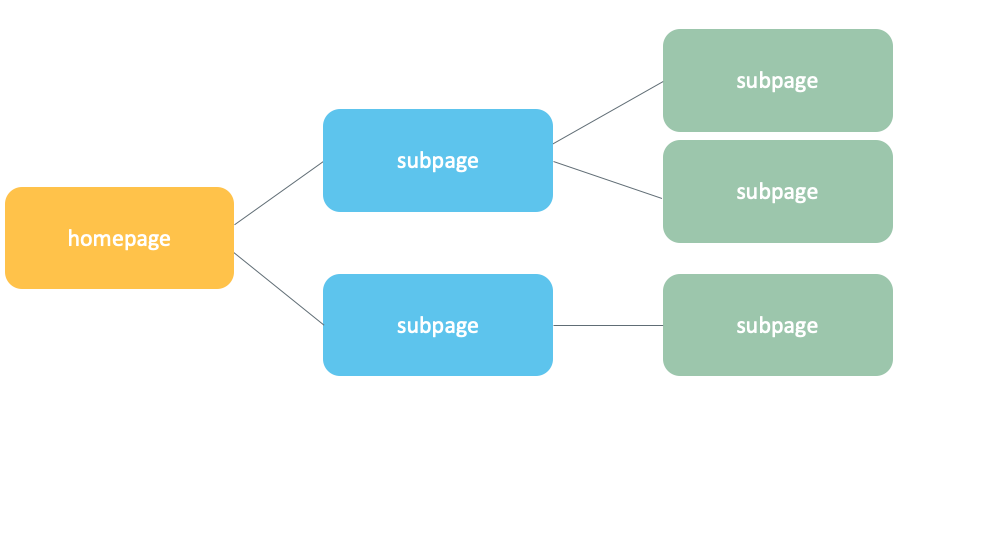Marketing with all facets - how you approach your marketing strategy and which mix you should choose, you will learn here with us! ... Continue reading


Subpages are web pages that are located below the homepage. In most cases, a web page consists of several subsites, which are only one click or link away from the homepage. Nevertheless, it is possible that after a subpage comes a following one, which is again only accessible via a link.
A subpage refers to all pages subordinate to the homepage. The term says nothing about the type of page. Especially product pages, landing pages and category pages are known forms of subpages of the homepage.
The first page of the website is called homepage. As a rule, this is the page you see when you call up a website. Thus, a homepage is an Internet offer, which usually consists of many individual subpages.
A landing page is a web page to which potential customers are directed via Google, another search engine or an online ad. The website operator moves the user through the landing page and to a targeted action (called conversion). Goals of this can be:
A category page should be the main page on a specific topic. The goal is to create a page that, in the best case, answers all the questions users have about that particular subject. Texts on category pages must cover this topic comprehensively.
Especially in online stores, product pages are among the most important sales pages. Here, the customer receives the information he needs to decide whether the product will actually be added to the shopping cart and subsequently purchased. This is how the visitor ultimately becomes a buyer.
A web page is a document in HTML format on the Internet, which can be called up there by a browser. The term web page refers to a single subpage of your website. Thus, all pages are subpages, which are not a homepage. Thus, all web pages are represented by several subpages. Each page has its own, individual URL, under which it can be called.
Both directly on the homepage as well as on individual subpages are the contents of the web pages. In the end, it is up to the owner how many of them his online presence has. For this reason, there may be many individual web pages of a single owner on the World Wide Web. Whether contents are better part of a big whole or should be distributed on several individual appearances, does not determine thereby the search engine, but the website owner itself. However, in the course of search engine optimization, it is recommended to combine existing content from several presences. The advantage of this is that the strengths of the individual pages can be bundled. Nevertheless, it is not possible to say whether large websites with several subpages are better than individual websites without corresponding internal linking.
Every web page that is opened after the starting page counts as another subpage. Web pages follow a hierarchical tree structure, with the homepage as the opening point. To find out how many of your pages have been indexed in Google, you have to enter “site:mywebsite.com” in the search bar of your browser and Google.
In the graphic below, you can see how the structure tree is subdivided from the start page into further paths. These are the subpages. Each of these can have just as many continuative paths, which in turn are subpages and have different forms, such as category pages or product pages.

| Aspect | Description | Recommendations |
| On-Page SEO | Actions that can be taken directly on the subpage to maximise its ranking potential. | – Meta Tags: Unique title and meta description containing the main keyword. – URL Structure: Short, descriptive, and includes the keyword. – Header Tags: Structure content with H1, H2, etc. |
| Content Optimisation | High-quality, relevant content is crucial for better ranking and a positive user experience. | – Keyword Usage: Naturally incorporate the main keyword, especially within the first 100 words. – Unique Content: Avoid duplicate content. – Visual Content: Optimise images/videos with SEO-friendly alt text. |
| Technical SEO Aspects | Technical factors that affect the SEO performance of a subpage. | – Page Load Time: Optimise by compressing images and improving server performance. – Mobile-Friendliness: Responsive design, easy navigation. – HTTPS: Secure connection for trust and SEO benefits. – Structured Data: Implement to enhance chances of Rich Snippets. |
You want to learn more about exciting topics?